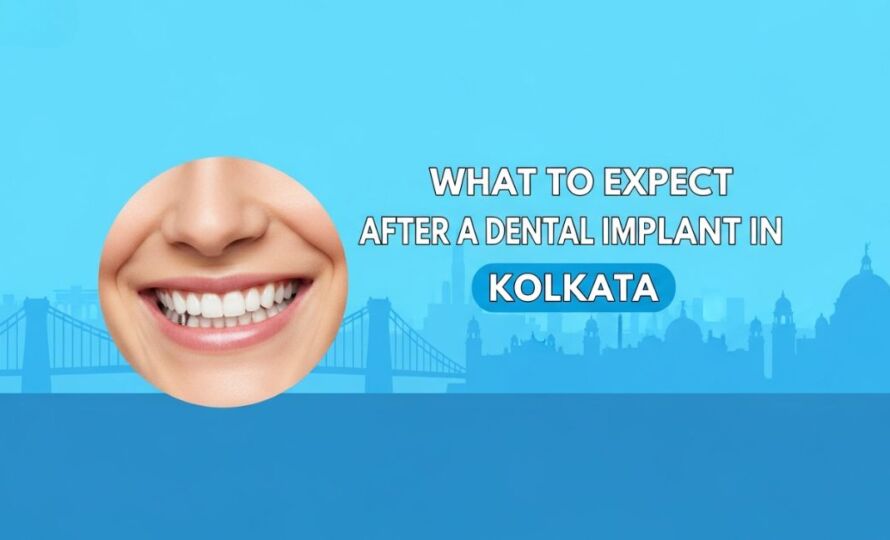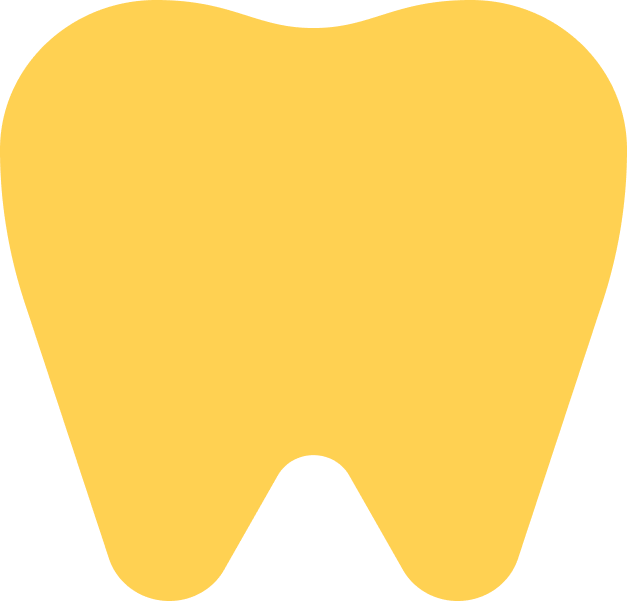
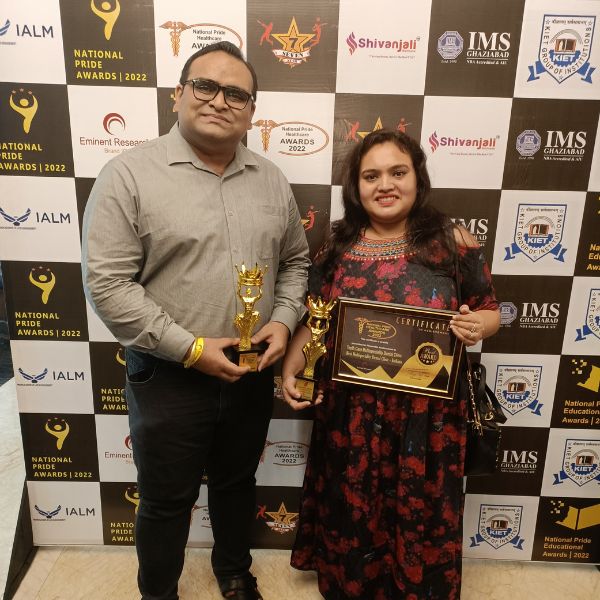
19 +
Experience
Committed to Creating Confident Smiles
Experienced Dentist
Personalized Treatment
Free online
Leading Dental
Cost-Effective
Customized
Practice Care
High quality complete care for every smile
Expert prosthodontic care in Kolkata for missing, damaged, or worn-out teeth. Restore chewing, bite, and smile confidence with advanced solutions.
Replaces missing teeth with durable, natural-looking dental implants for patients across Kolkata.
Corrects misaligned teeth and bite issues using braces or aligners, providing expert care for patients in Kolkata.
Treats infected or damaged tooth pulp with root canal therapy, ensuring safe and effective dental care in Kolkata.
Why Us?
Bringing World-Class Smiles to Kolkata
22 +
23 K+
Customized Dental Treatments
Multiple Award Winning Dental Clinic
Book & Consult
Examination & Diagnosis
Treatment & Care
Follow-Up & Maintenance
Portfolio
Real People, Real Results.
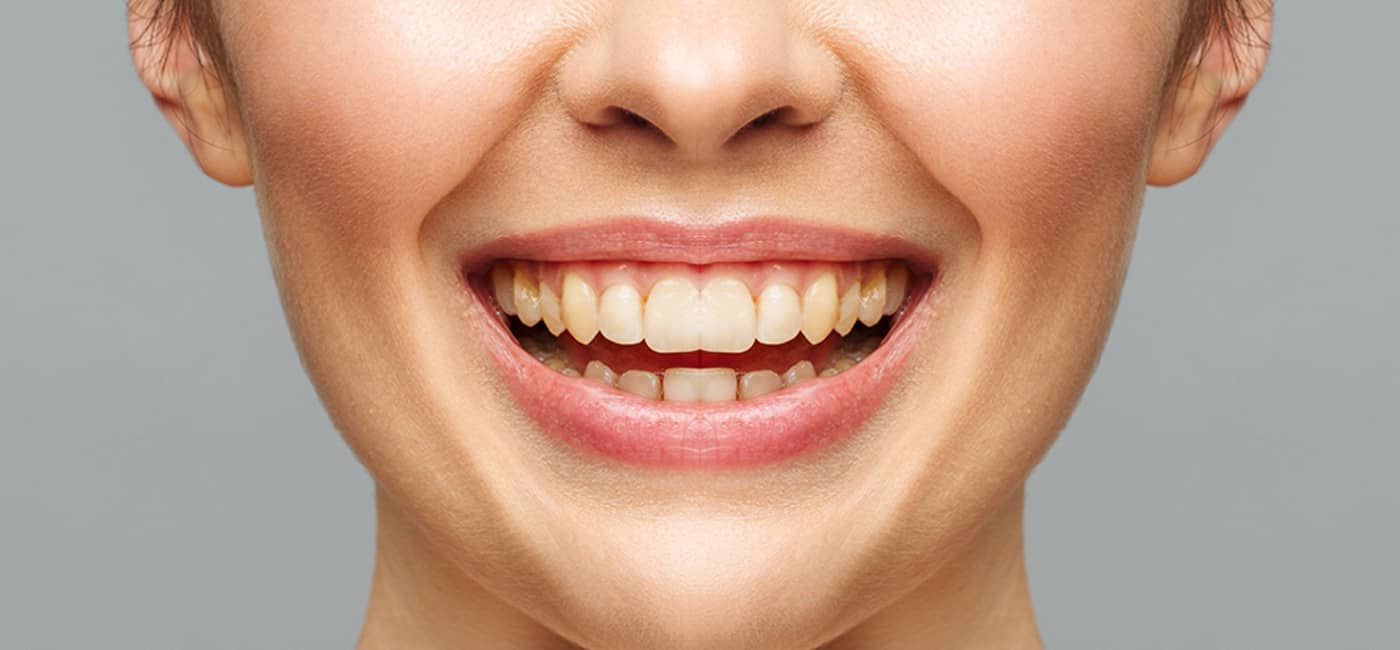








4.9
Rated & Trusted by Our Patients
Highly rated by our patients for trusted, expert dental care
Blogs and Articles
All About Teeth: Tips, News, Updates & Information
What to Expect After a Dental Implant?
Dental implant treatment is a highly predictable and long-lasting solution for missing teeth, but many patients feel anxious about the recovery phase. Understanding what happens after implant placement helps reduce fear and ensures better healing.
At Teeth Care Multispeciality Dental Clinic in Kolkata, we guide our patients through every stage of dental implant recovery with clarity, medical precision, and continuous support. This detailed guide explains exactly what to expect after a dental implant, from the first day to long-term care.
Immediately After Dental Implant Surgery (First 24 Hours)
The first 24 hours after dental implant placement are crucial for proper healing. During this period, your body begins the initial healing response and forms a protective clot around the implant site.
Most patients experience mild and manageable symptoms that settle quickly when post-operative instructions are followed carefully.
Normal Post-Surgery Symptoms
| Symptom | What It Means | Expected Duration |
| Mild bleeding | Natural clot formation | Few hours |
| Numbness | Effect of anesthesia | 2-4 hours |
| Gum tenderness | Tissue healing response | 1-2 days |
| Mild swelling | Normal inflammation | 2-3 days |
Patients treated under our advanced dental implant treatment in Kolkata generally experience minimal discomfort due to precise surgical planning.
Pain After a Dental Implant in kolkata
Pain after dental implant surgery is usually mild and far less than what patients expect. Most people compare it to routine dental procedures rather than surgery.
Pain intensity reduces steadily each day and is easily controlled with prescribed medication.
Pain Timeline After Implant Placement
| Time Period | Expected Pain Level | Management |
| Day 1 | Mild soreness | Prescribed medication |
| Day 2-3 | Slight tenderness | Normal healing |
| Day 4-5 | Significant reduction | Minimal or no medication |
| After 1 week | No pain | Full comfort |
Persistent or increasing pain after the fourth day should always be evaluated by your dentist.
Swelling and Bruising After Implant Surgery
Swelling is a natural part of the healing process and indicates that your body is responding correctly to surgery. Bruising may appear externally in some cases but resolves naturally.
Most patients visiting our Kolkata clinics notice controlled swelling due to careful tissue handling.
Swelling Progression
| Day | Swelling Status | Normal Expectation |
| Day 1 | Minimal | Normal |
| Day 2-3 | Peak swelling | Expected |
| Day 4-5 | Gradual reduction | Healing phase |
| Day 7 | Mostly resolved | Normal recovery |
Eating After Dental Implant Surgery
Diet plays a critical role in protecting the implant site and supporting healing. Soft foods reduce pressure on the implant and help prevent complications.
Chewing on the opposite side of the implant is strongly recommended during early recovery.
Diet Timeline After Implant Placement
| Timeframe | Food Texture | Purpose |
| First 24 hours | Soft and cool | Protect clot |
| Day 2-5 | Soft solids | Reduce pressure |
| After 1 week | Semi-normal | Healing support |
| After crown placement | Normal | Full function |
Hot, hard, or sticky foods should be avoided until your dentist confirms stability.
Oral Hygiene After Dental Implant Placement
Maintaining oral hygiene is essential for implant success, but cleaning must be gentle during early healing. Proper hygiene prevents infection and supports bone integration.
Patients are carefully guided by our prosthodontics and smile restoration department on safe cleaning techniques.
Oral Care Guidelines
| Time Period | Cleaning Approach | Reason |
| First 24 hours | Avoid brushing site | Protect healing tissue |
| After 24 hours | Gentle brushing | Prevent plaque |
| After 3 days | Normal brushing nearby | Support healing |
| Long term | Regular hygiene | Implant longevity |
Osseointegration: Bone Healing Around the Implant
Osseointegration is the most important phase of implant recovery. During this stage, the implant fuses permanently with the jawbone.
This biological process ensures the strength and long-term stability of the dental implant.
Osseointegration Timeline
| Phase | Duration | What Happens |
| Early healing | 2-4 weeks | Bone adaptation |
| Active integration | 2-3 months | Bone fusion |
| Final integration | 3-6 months | Full stability |
The success of this phase determines how long your implant will last.
Stitches and Follow-Up Visits
Stitches help the gum heal properly around the implant and usually dissolve on their own. Follow-up visits allow dentists to monitor healing and prevent complications.
Patients are encouraged to attend reviews at the New Town dental clinic, where advanced diagnostics support precise healing assessment.
Stitch and Review Timeline
| Aspect | Expected Time |
| Stitch dissolution | 7-10 days |
| First follow-up | 7 days |
| Healing review | 4-6 weeks |
| Crown planning | After integration |
Temporary Teeth During Healing
Temporary restorations may be provided depending on the location of the implant. These restorations are designed to maintain appearance while protecting the implant.
They are carefully shaped to avoid pressure on the healing implant.
Temporary Restoration Usage
| Implant Location | Temporary Tooth | Purpose |
| Front teeth | Often provided | Aesthetics |
| Back teeth | Sometimes avoided | Protection |
| Multiple implants | Case-dependent | Function support |
Final Crown Placement After Healing
Once osseointegration is complete, the final crown is placed to restore full chewing and appearance. This stage completes the implant treatment.
Implant crowns are custom-designed under the supervision of Dr. Sanket Chakraverty, Prosthodontist and Implantologist, ensuring precise bite alignment.
Final Restoration Process
| Step | Description |
| Implant exposure | Access implant |
| Abutment placement | Connector fixed |
| Crown fitting | Custom ceramic tooth |
| Bite adjustment | Comfort ensured |
Long-Term Care After a Dental Implant
Dental implants require the same care as natural teeth. Consistent hygiene and regular dental visits ensure long-term success.
With proper care, implants can last for decades.
Long-Term Implant Maintenance
| Care Aspect | Recommendation |
| Brushing | Twice daily |
| Flossing | Daily |
| Dental visits | Every 6 months |
| Professional cleaning | As advised |
Warning Signs After Dental Implant Surgery
Certain symptoms should never be ignored as they may indicate complications. Early intervention prevents implant failure.
When to Contact Your Dentist
| Symptom | Clinical Significance |
| Increasing pain | Possible infection |
| Persistent swelling | Healing issue |
| Implant movement | Integration failure |
| Pus or fever | Infection |
Why Dental Implant Recovery Is Better Than Other Options
Compared to dentures or bridges, dental implant recovery offers better comfort, stability, and oral health benefits.
Patients report higher confidence and chewing efficiency once healing is complete.
Comparison of Tooth Replacement Recovery
| Factor | Implant | Bridge | Denture |
| Stability | Excellent | Moderate | Low |
| Bone preservation | Yes | No | No |
| Long-term comfort | High | Medium | Low |
| Maintenance | Normal | Moderate | High |
Why Choose teethcare in Kolkata
Choosing the Teeth Care Multispeciality Dental Clinic plays a major role in recovery success. Teeth Care combines experience, technology, and ethical treatment planning.
Patients can learn more through our multispeciality dental clinic profile in Kolkata and explore specialists via the expert dental care team network.
Clinical Strengths
| Aspect | Benefit |
| Experienced implantologists | Predictable results |
| Digital diagnostics | Precision planning |
| Multispeciality care | Safety |
| Multiple Kolkata locations | Convenience |
Conclusion
Knowing what to expect after a dental implant removes uncertainty and builds confidence. With modern techniques and proper care, dental implant recovery is smooth, comfortable, and highly successful.
At Teeth Care Multispeciality Dental Clinic, we remain committed to guiding every patient from surgery to final crown with transparency, expertise, and long-term care, so your new smile stays strong for life.
FAQ about After a Dental Implant!
How long does it take to recover after a dental implant?
Initial recovery usually takes 7–10 days, while complete bone integration and healing can take 3–6 months depending on bone quality and overall health.
Is pain normal after a dental implant?
Mild discomfort is normal for a few days after implant surgery. Pain typically reduces daily and is manageable with prescribed medication.
How long does swelling last after implant surgery?
Swelling usually peaks within 48–72 hours and gradually subsides over the next few days. Most swelling resolves within one week.
When can I eat normally after a dental implant?
Soft foods are recommended for the first few days. Normal eating can resume gradually once healing progresses and the dentist confirms stability.
How do I clean my mouth after dental implant surgery?
Gentle brushing can start after 24 hours. The implant area should be kept clean without aggressive brushing or forceful rinsing.
What is osseointegration in dental implants?
Osseointegration is the process where the implant fuses with the jawbone, providing strength and long-term stability. This process usually takes several months.
Can a dental implant fail during healing?
Implant failure is rare but can occur due to infection, smoking, or poor oral hygiene. Regular follow-ups help detect and prevent issues early.
When is the final crown placed on a dental implant?
The final crown is placed after complete bone integration, usually between 3 to 6 months after implant placement.
Do dental implants need special long-term care?
No special care is required. Dental implants should be maintained like natural teeth with brushing, flossing, and regular dental visits.
Single Tooth Implant vs Bridge in Kolkata
A single missing tooth may look like a small problem, but medically it can create serious long-term complications if ignored. At Teeth Care Multispeciality Dental Clinic in Kolkata, we regularly treat patients from New Town, Chinar Park, Ballygunge, Dunlop, and Charnock who come to us after suffering jawbone loss, facial sagging, drifting teeth, bite imbalance, and chewing difficulty caused by just one missing tooth.
The most common question we hear is:“What is better for one missing tooth – a single tooth implant or a dental bridge?”
Both treatments are effective, but they work in completely different ways. This expert guide will help you understand the difference between single tooth implant vs bridge, their cost in Kolkata, durability, comfort, appearance, bone health impact, and which option is better for you.
Why Replacing a Single Missing Tooth Is Medically Important
When a tooth is lost and not replaced on time, the following changes begin silently:
- Jawbone starts shrinking
- Nearby teeth tilt into the empty space
- Bite becomes uneven
- Gum infection risk increases
- Facial structure begins collapsing
- Chewing efficiency reduces
This is why dentists strongly recommend early single tooth replacement in Kolkata using modern treatment options.
What Is a Single Tooth Dental Implant?
A single-tooth dental implant is a permanent replacement where a titanium implant is placed inside the jawbone to function like a natural tooth root. Once it bonds with the bone, a ceramic crown is placed on top to restore full function and appearance.
At Teeth Care, this is done through our advanced implantology treatment in Kolkata using digital planning and guided implant placement.
Components of a Single Tooth Implant
| Component | Function |
| Titanium Implant | Artificial tooth root |
| Abutment | Connector |
| Ceramic Crown | Natural visible tooth |
Main Benefits of Single Tooth Implant
- Permanent solution
- Prevents jawbone shrinkage
- No damage to nearby teeth
- Feels like a natural tooth
- Strong chewing power
- 25+ years of durability
Implants at our clinic are placed under the expertise of Dr. Sanket Chakraverty, Prosthodontist & Implantologist, who handles complex implant restorations.
What Is a Dental Bridge?
A dental bridge replaces a missing tooth by trimming the two adjacent teeth and using them to support an artificial tooth in between. This treatment is part of our restorative dental solutions for missing teeth and is often recommended when implants are not possible.
Types of Dental Bridges
- Traditional Bridge
- Cantilever Bridge
- Maryland Bridge
- Implant-Supported Bridge
Advantages of Dental Bridge
- Faster treatment
- No surgery
- Lower starting cost
- Suitable for low bone density patients
Implant vs Bridge – Quick Comparison
| Feature | Implant | Bridge |
| Replaces root | Yes | No |
| Affects nearby teeth | No | Yes |
| Prevents bone loss | Yes | No |
| Lifespan | 25+ years | 8-12 years |
| Surgery | Yes | No |
| Long-term value | High | Lower |
Procedure Comparison in Kolkata
Single Tooth Implant Procedure
- 3D scan and diagnosis
- Precise implant placement
- Healing phase (3–6 months)
- Abutment and crown placement
All implant crowns are designed with help from our prosthodontics and smile restoration department to ensure a perfect bite and natural aesthetics.
Dental Bridge Procedure
- Trimming of adjacent teeth
- Digital impressions
- Temporary bridge
- Final cemented bridge in 7–14 days
Durability and Lifespan Comparison
| Factor | Implant | Bridge |
| Lifespan | 25+ years | 8-12 years |
| Replacement | Rare | Frequent |
| Bone Protection | Yes | No |
| Long-Term Cost | Lower | Higher |
Winner: Tooth Implant
Effect on Adjacent Teeth

Jawbone & Facial Structure Protection
Only implants stimulate the jawbone and prevent facial collapse. Bridges do not stop bone shrinkage.
Aesthetic and Comfort Comparison
| Factor | Implant | Bridge |
| Look | Natural | Good |
| Gum Health | Maintained | May Recede |
| Chewing | Strong | Moderate |
| Speech | Natural | Adjustment Needed |
Cost of Single Tooth Implant vs Bridge in Kolkata
| Treatment | Cost Range |
| Single Tooth Implant | ₹18,000 – ₹38,000 |
| Dental Bridge | ₹15000 – ₹120000 |
For exact pricing, many patients visit our New Town dental clinic for implants and bridges for digital evaluation.
Recovery and Aftercare
| Factor | Implant | Bridge |
| Recovery | 7-10 days | None |
| Food Restriction | Temporary | Minimal |
| Oral Care | Normal | Special Floss |
You can also read our detailed guide on dental implant recovery time.
Who Should Choose a Single Tooth Implant in Kolkata?
- Patients wanting a permanent solution
- Younger adults
- Patients with a good jawbone
- Those concerned about facial structure
- Patients protecting nearby teeth
Who Should Choose a Dental Bridge?
- Patients with severe bone loss
- Elderly patients
- Patients who cannot undergo surgery
- Budget-focused patients
Which Is Better Long-Term – Implant or Bridge?
If your goal is lifetime durability, bone protection, and natural chewing, implants are clearly superior.
Bridges are best when implants are not medically possible.
Why Choose Us?
Teeth Care is one of the most trusted centers for single tooth implants and dental bridges in Kolkata, with branches across:
- New Town
- Chinar Park
- Ballygunge
- Dunlop
- Charnock
Learn more through our dental clinic profile in Kolkata,
and explore our specialists via the expert dental care team network.
Final Verdict: Single Tooth Implant vs Bridge in Kolkata
| Goal | Best Choice |
| Permanent solution | Implant |
| Lowest starting cost | Bridge |
| Natural chewing | Implant |
| Jawbone protection | Implant |
| No surgery | Bridge |
Overall Winner: Single Tooth Dental Implant
Book Your Consultation in Kolkata
If you are confused between an implant or bridge, the smartest step is expert evaluation.
You can easily book a dental consultation in Kolkata with our expert team for a personalized treatment plan.
Conclusion
Choosing between a single tooth implant vs bridge is not just about cost. It impacts your oral health, facial appearance, chewing strength, and confidence for life. While bridges offer quick results at lower cost, implants provide permanent strength, bone protection, and unmatched comfort.
At Teeth Care Multispeciality Dental Clinic, Kolkata, we ensure every patient receives the safest, most effective, and long-lasting tooth replacement solution.
FAQ about single implant vs Bridge
Which is better for one missing tooth – implant or bridge?
A single tooth implant is the better long-term solution because it replaces both the root and crown, preserves jawbone, and does not damage nearby teeth. A dental bridge is suitable when surgery is not possible or a quicker, lower-cost option is needed.
What is the cost of a single tooth implant in Kolkata?
The cost of a single tooth implant in Kolkata generally ranges between ₹35,000 and ₹70,000. The final cost depends on bone condition, implant brand, and crown type.
What is the cost of a dental bridge in Kolkata?
A dental bridge for one missing tooth usually costs between ₹12,000 and ₹30,000 depending on the material and number of supporting teeth involved.
Does a dental bridge damage healthy teeth?
Yes, a traditional bridge requires trimming two adjacent healthy teeth to support the artificial tooth. This permanently weakens those teeth and may increase the risk of future dental problems.
Is the implant procedure painful?
No, implant placement is done under local anesthesia, making the procedure painless. Mild discomfort after surgery is temporary and easily managed with medication.
How long does a single tooth implant last?
With proper oral hygiene and regular dental checkups, a single tooth implant can last 25 years or even a lifetime.
How long does a dental bridge last?
A dental bridge typically lasts 8 to 12 years. It may need replacement earlier if supporting teeth develop decay or gum problems.
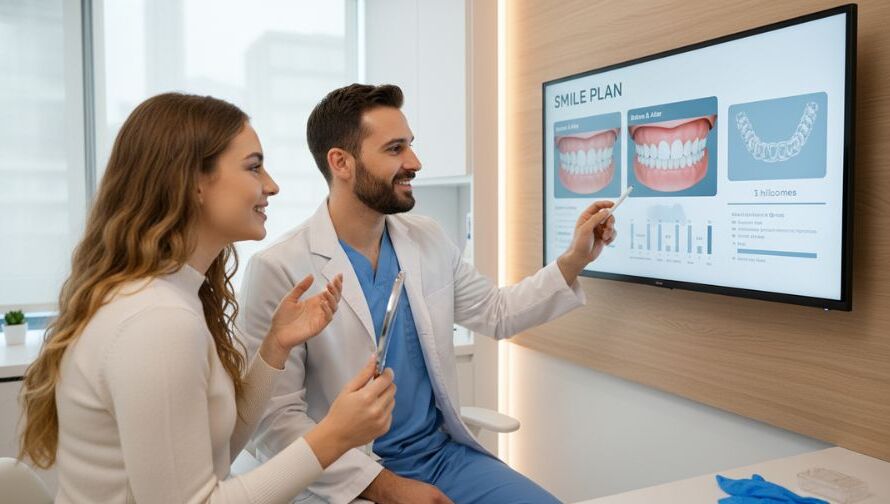
Digital Smile Design in Orthodontics: How It Works
Looking for advanced orthodontic treatment in Kolkata? Digital Smile Design offers accurate planning and stunning smile results. Book your consultation today.
Our Clients
Partner With us Excellence in Comprehensive Oral Care




Client 01


Client 02


Client 03


Client 04


Client 05


Client 06


Client 07


